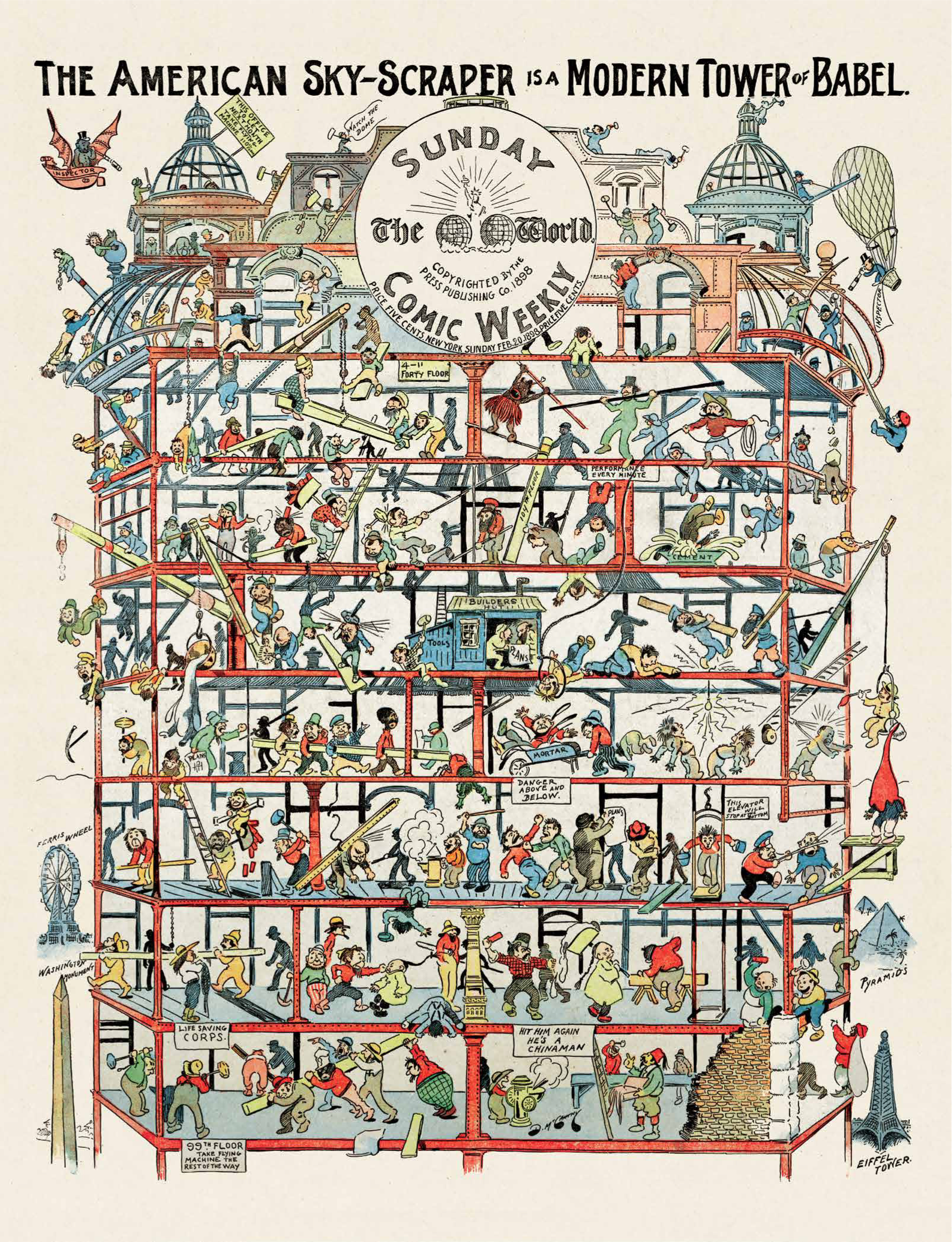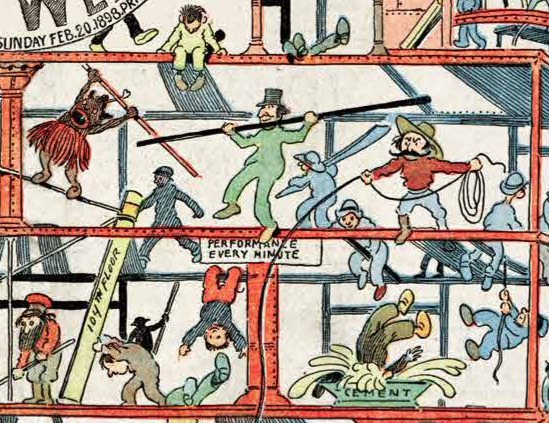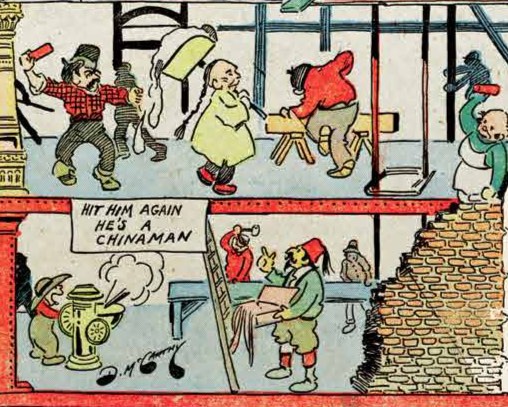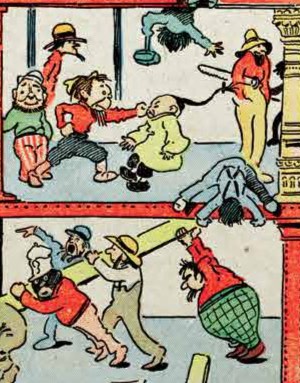New York World staff cartoonist Dan McCarthy’s 1898 “The American Sky-Scraper Is a Modern Tower of Babel” is a trove of tropes that characterizes so much of the first decade of American newspaper comics. Like R.F. Outcault and Walt McDougall, McCarthy uses that massive Sunday newspaper page to draw a tableaux caricature of the cityscape, the new and rapidly changing environment the World readers experience each day.
Some of the most talented and ambitious early newspaper cartoonists used the full page tableau format to capture the energy of the city. Outcault’s Hogan’s Alley was the first to use the format to depict the city scape, which is to say it was an interpretation of that new experience. Walt McDougall was another fan of the tableau to depict social landscapes, including his magnificent “Life in the City as the Countryman Sees It.” Comic artists seemed to absorb the physical energy of turn-of-the century America and direct and shape it into popular art. Just as the slapstick, chases and fight scenes of early film were aesthetic conventions that channeled the antic energies of modern urban progress, mechanization and rapid change, so too did modern preoccupations with motion, energy, cause and effect, the urban experience shape the aesthetics of early comic art.
Dan McCarthy 1898. McCarthy was a well-regarded caricaturist for the humor weeklies and eventually for the World. He founded a caricature school but died in the first decade of the 20th Century in his 50s. His “The American Sky-Scraper is a Modern Tower of Babel” is a caricature of urban progress seen through the lend of ethnic diversity. The panoply of so called “hyphenated American” – Italian-, Irish-, Chinese-, Eastern European-, and African-Americans – are all stereotyped here at the same time they are acknowledged as the builders of the new city.
You can spend hours dissecting McCarthy’s depictions of individual ethnic groups here, and there are some predictable bigotries. They are mainly distinguished by their common visual stereotypes of the day. Italians with triangular hats and handlebar mustaches. Irish with chin beards and simian face. Chinese figures with yellow long shirts and thin braided pony tails. Eastern Europeans/Jews with full beards, hats and high boots. The Irish characters often seem to be ready for a fight. One African-American sports primitive dress. And for some reason the Chinese-American figures are on the receiving end of deliberate violence. But generally, this “Tower of Babel” is a tableaux of chaos, slapstick mishaps all in service of a mechanically sophisticated scientific wonder. The tension between the chaotic energy and play of McCarthy’s workers and the rigid symmetry of the structure they are building is of course the “joke” here.
But McCarthy’s cross section of both the building itself and the New York population generally embodies the ambivalence of WASP America towards the massive waves of emigration during this era.
In other depictions of emigration, Americans seemed to greet emigrates as newcomers and fledgling Americans. It was generally acknowledged that a fast-growing and internationally ambitious America needed this infusion of cheap labor to fuel its growth. And so the stereotyping was not of the most vicious and dehumanizing sort we find elsewhere in American culture. Here it is more patronizing and imperialistic. The American middle class seemed to recognize that immigration was key to American ambitions, but patronizing stereotyping kept these emigres at a distance and always inferior.
Discover more from Panels & Prose
Subscribe to get the latest posts sent to your email.






No women in this picture, hunh?
Pingback: City Visions: The Hurry Up New Yorker – Panels & Prose
Pingback: The Rapidtoodleum Will Save Us All – Panels & Prose
Pingback: Cartooning the ‘American Scene’: Comics as Modern Landscape – Panels & Prose